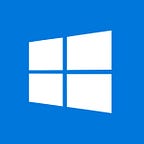Parts of a motherboard and their functions 2024
When it comes to understanding the heart of a computer, the motherboard is where it all begins. This intricate circuit board serves as the central nervous system, connecting various components and allowing them to work together seamlessly. In this article, we’ll delve into the key parts of a motherboard and its functions, providing you with a comprehensive overview of this critical component.
What is a motherboard?
A motherboard, often referred to as the mainboard, is the central circuit board in a computer. It serves as the hub that connects various components like the CPU, RAM, storage devices, and peripherals. The motherboard provides the essential pathways for data and power to flow between these parts, enabling the computer to function as a cohesive unit. It also houses key components like the CPU socket, RAM slots, and expansion slots, making it a critical component in any computer system.
Motherboard and its parts
It includes a CPU socket for the processor, RAM slots for memory, and expansion slots for additional components like graphics cards. Input/output ports connect peripherals like USB devices, while power connectors supply electricity. The BIOS chip contains essential system instructions, and a CMOS battery maintains settings. The chipset manages communication between components. In essence, the motherboard orchestrates the interaction of all parts, allowing the computer to function effectively.
CPU Socket
The CPU (Central Processing Unit) socket is arguably the most crucial part of a motherboard. It’s the slot where the processor is installed. The CPU is often considered the brain of the computer, executing instructions and performing calculations.
RAM Slots
Random Access Memory (RAM) is the temporary memory that the computer uses to store data that is actively being processed or used. RAM slots on the motherboard allow for the installation of memory modules, which can significantly impact a system’s performance.
Expansion Slots
Expansion slots are essential for customizing a computer’s capabilities. They allow you to add extra components like graphics cards, sound cards, and network cards. The most common types of expansion slots are PCIe (Peripheral Component Interconnect Express) slots.
Input/Output Ports
These are the various connectors on the motherboard that enable communication with external devices. This includes USB ports, audio jacks, HDMI ports, and Ethernet ports. The number and type of ports can vary widely depending on the motherboard’s make and model.
CMOS Battery
The CMOS (Complementary Metal-Oxide Semiconductor) battery powers the CMOS memory, which stores the system’s BIOS (Basic Input/Output System) settings. Without this battery, the BIOS settings would reset every time the computer is powered off.
BIOS Chip
The BIOS chip contains the firmware that initializes the computer’s hardware components during the boot process. It also provides a basic set of instructions for the operating system to communicate with the hardware.
Power Connectors
Motherboards have multiple power connectors that supply electricity to different parts of the board. The main power connector, often referred to as the ATX connector, provides power to the majority of the motherboard. Additionally, there are supplementary connectors for specific components like the CPU.
SATA and M.2 Connectors
These connectors allow for the attachment of storage devices like hard drives and SSDs (Solid State Drives). SATA (Serial Advanced Technology Attachment) ports are standard for older storage devices, while M.2 slots provide faster data transfer rates for newer SSDs.
Chipset
The chipset is a set of integrated circuits responsible for controlling various functions of the motherboard, including communication between the CPU, RAM, and other components. It plays a critical role in determining a motherboard’s compatibility with different hardware.
Conclusion
Understanding the various parts of a motherboard and their functions is essential for anyone interested in computer hardware. Whether you’re a tech enthusiast, a gamer, or a professional in the field of technology, knowing how these components work together empowers you to make informed decisions when building or upgrading a computer.
